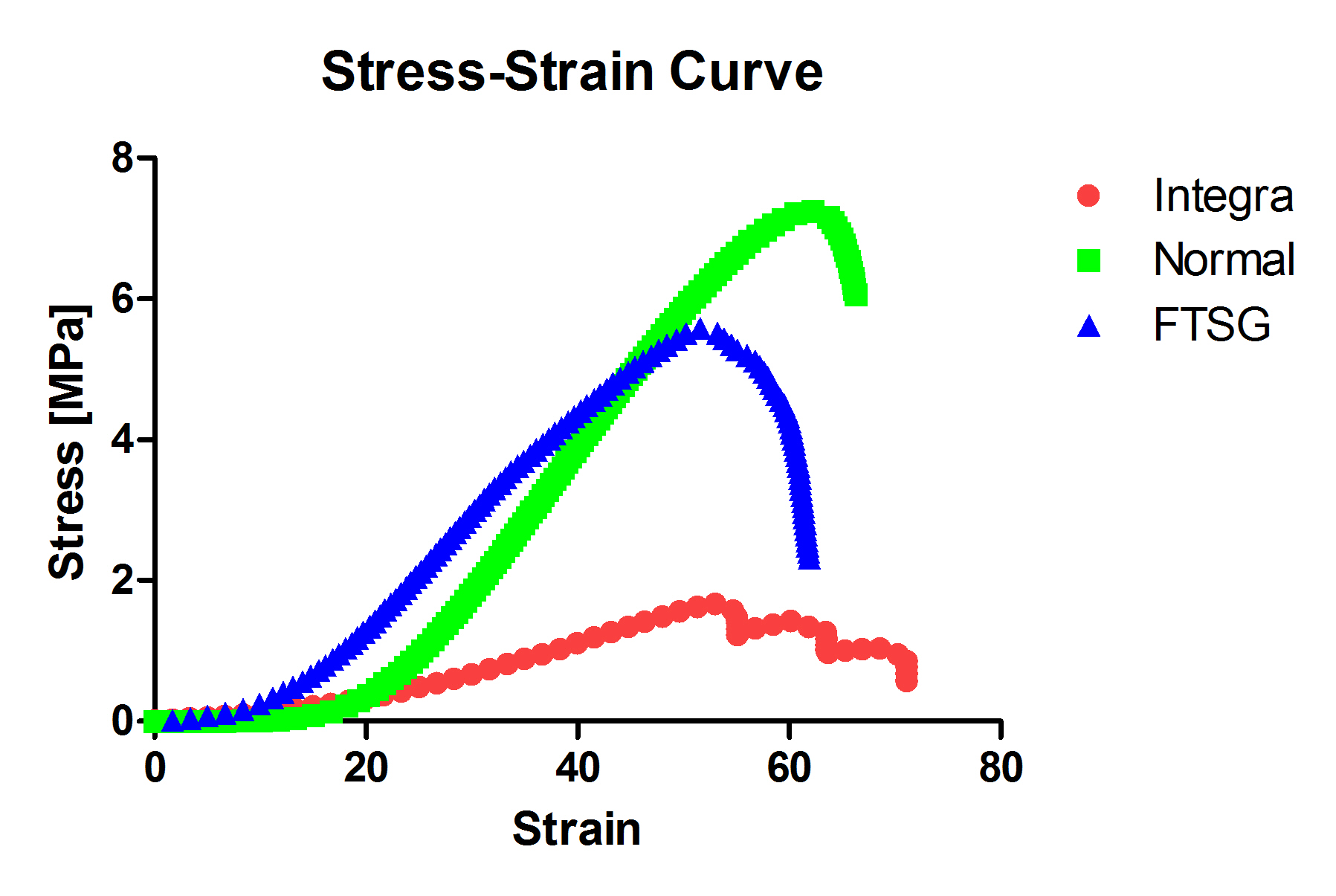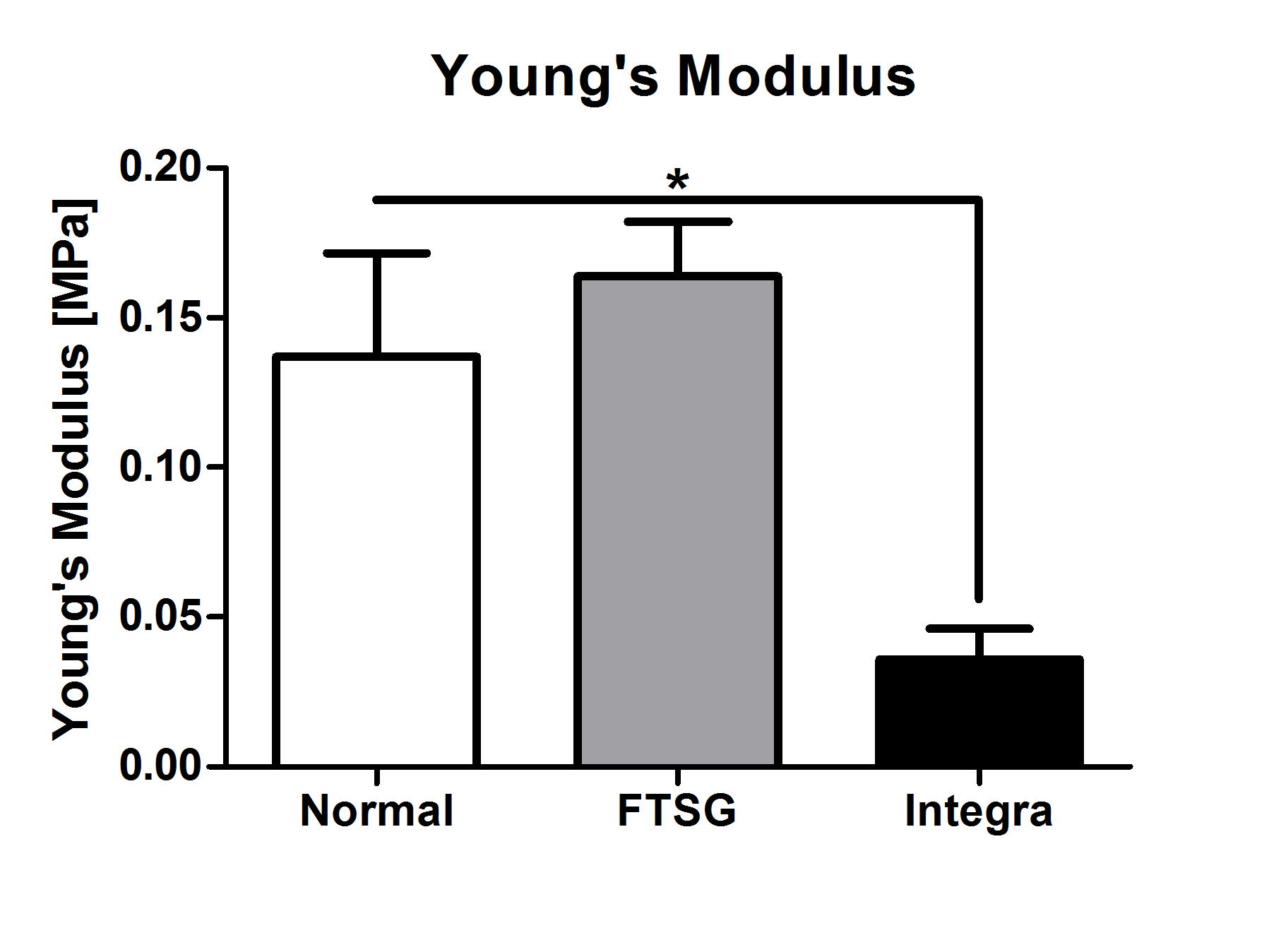|
|
 |
Back to 2011 Posters
Comparison of Native Porcine Skin and a Dermal Substitute Using Tensiometry and Digital Image Speckle Correlation
Jason R. Fritz, MSBE1, Brett T. Phillips, MD1, Nicole Conkling, BA BS2, Mitchell Fourman, M.Phil2, Mark M. Melendez, MD3, Divya Bhatnagar, MS4, Miriam Rafailovich, PhD4, Alexander B. Dagum, MD1.
1Stony Brook University Medical Center, Stony Brook, NY, USA, 2Stony Brook University School of Medicine, Stony Brook, NY, USA, 3Nassau University Medical Center, East Meadow, NY, USA, 4Stony Brook University, Stony Brook, NY, USA.
BACKGROUND: Many dermal substitutes are currently used in plastic surgery to cover various soft tissue defects as a result of trauma, burns or ablative cancer surgery. Little information is available on the biomechanical properties of these dermal substitutes after adequate incorporation as compared to normal skin. Determining parameters such as tensile strength in these skin substitutes will help us further understand their wound healing properties and potential in developing artificial tissue constructs. We hypothesize that a dermal substitute has a lower strain curve and altered stress-induced deformation with Tensiometry and DISC analysis.
METHODS: Two separate 5x10cm full-thickness wounds were created on the dorsum of three female swine. After excision, the wounds were randomly assigned to either a full-thickness skin graft (FTSG) or application of artificial dermal matrix (Integra, Plainsboro, NJ). Fibrin glue (Tisseel, Deerfield, IL) was applied to all wounds before placement of FTSG or Integra. On day 42, cultured autologous keratinocytes were applied as a cell sheet to the wound covered with Integra. On day 56, the wounds were fully excised and fresh tissue specimens, including normal skin, were stored in a physiological solution and prepared for analysis. Rectangular samples were excised from the center of each specimen and measured 4x4x30mm. Using a Tensiometer (Instron, Norwood, MA) and Digital Image Speckle Correlation (DISC Analysis), we evaluated the tensile strength of three different groups of skin: Normal, FTSG and Integra. DISC Analysis selects planar coordinates of skin pores and determines displacement vectors after an induced stress such as stretching. The correlating displacement and Young’s modulus of skin are used to calculate the magnitude and direction of tensile strength.
RESULTS: There is a significant difference between the Integra specimen when compared to normal skin and FTSG. We found a minimal difference in the stress-strain curves of the latter two(Figure 1). The Integra alone shows plastic deformation with continued stretching before ultimate midline fracture. There is also a significant change between the Young's moduli of the normal skin and the Integra while there is little difference between the FTSG and the normal skin(Figure 3). DISC analysis confirms this analysis. The normal skin and FTSG show a convergence of vectors to a linear plane while Integra shows very little organization(Figure 2).
CONCLUSIONS: Using two different methods of analysis, we have shown a dermal substitute (Integra) does not display similar biomechanical properties after adequate incorporation. These major tensile strength differences are shown between normal, grafted and Integra constructs under physiological conditions. These properties will lead to further understanding of artificial tissue and engineered constructs in laboratory and clinical applications.
  
Back to 2011 Posters
|










